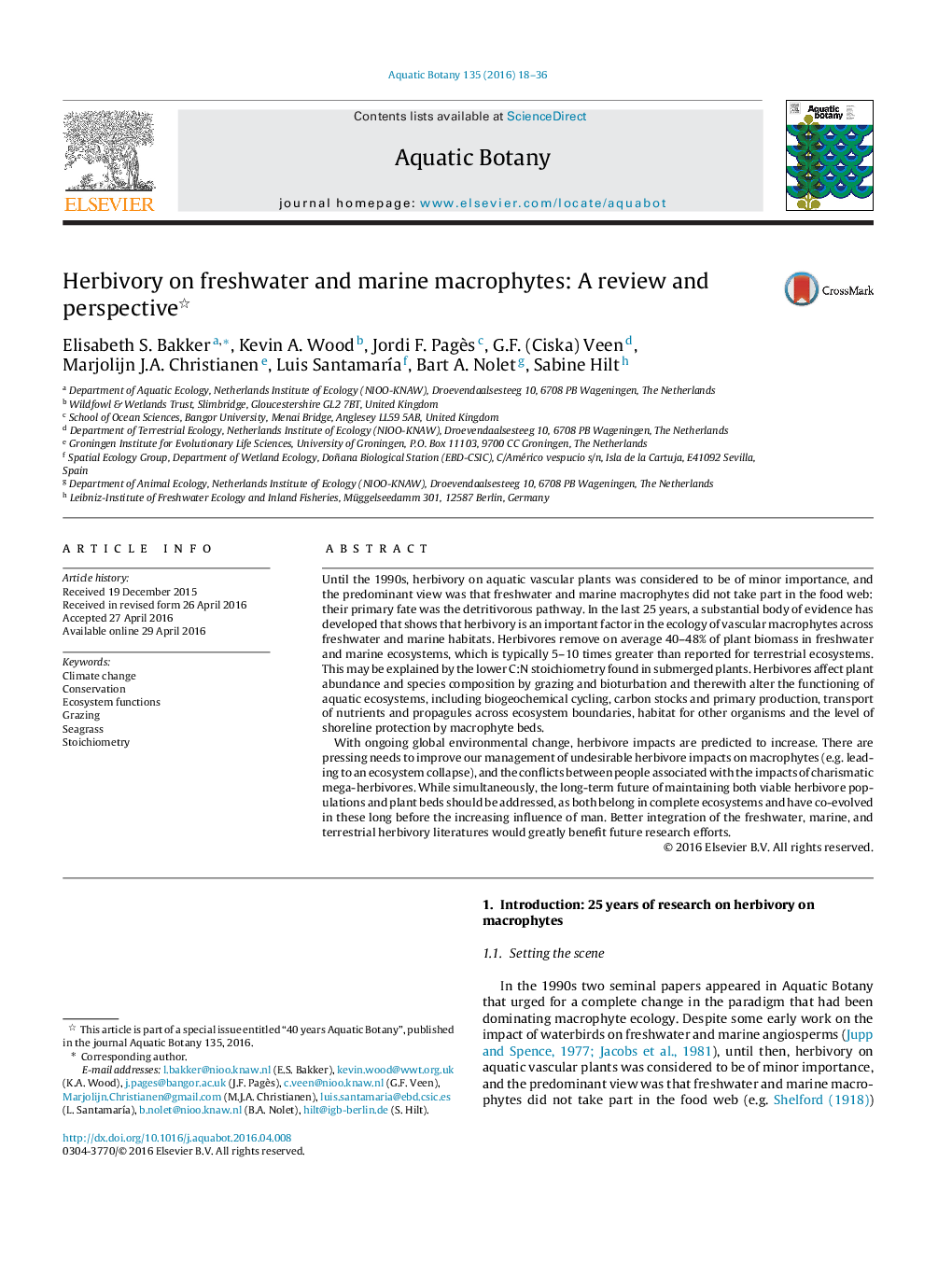| Article ID | Journal | Published Year | Pages | File Type |
|---|---|---|---|---|
| 4527560 | Aquatic Botany | 2016 | 19 Pages |
•Herbivores provide strong top-down regulation on freshwater macrophytes and seagrasses.•Herbivores remove on average 40–48% of plant biomass in aquatic ecosystems versus 4–8% in terrestrial ones.•Herbivores have strong direct and indirect effects on aquatic ecosystem functioning.•With ongoing global environmental change, herbivore impacts are predicted to increase.•New tools and functional classification of aquatic herbivores will advance understanding and prediction of their impacts.
Until the 1990s, herbivory on aquatic vascular plants was considered to be of minor importance, and the predominant view was that freshwater and marine macrophytes did not take part in the food web: their primary fate was the detritivorous pathway. In the last 25 years, a substantial body of evidence has developed that shows that herbivory is an important factor in the ecology of vascular macrophytes across freshwater and marine habitats. Herbivores remove on average 40–48% of plant biomass in freshwater and marine ecosystems, which is typically 5–10 times greater than reported for terrestrial ecosystems. This may be explained by the lower C:N stoichiometry found in submerged plants. Herbivores affect plant abundance and species composition by grazing and bioturbation and therewith alter the functioning of aquatic ecosystems, including biogeochemical cycling, carbon stocks and primary production, transport of nutrients and propagules across ecosystem boundaries, habitat for other organisms and the level of shoreline protection by macrophyte beds.With ongoing global environmental change, herbivore impacts are predicted to increase. There are pressing needs to improve our management of undesirable herbivore impacts on macrophytes (e.g. leading to an ecosystem collapse), and the conflicts between people associated with the impacts of charismatic mega-herbivores. While simultaneously, the long-term future of maintaining both viable herbivore populations and plant beds should be addressed, as both belong in complete ecosystems and have co-evolved in these long before the increasing influence of man. Better integration of the freshwater, marine, and terrestrial herbivory literatures would greatly benefit future research efforts.
Graphical abstractFigure optionsDownload full-size imageDownload as PowerPoint slide
